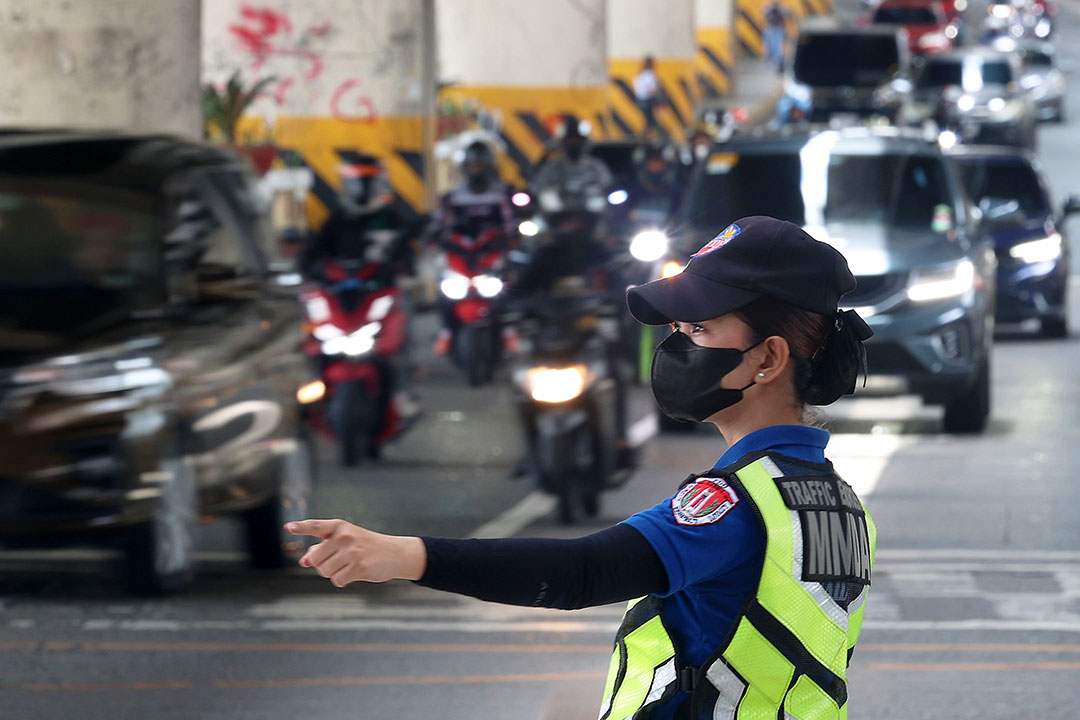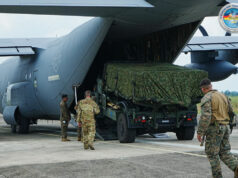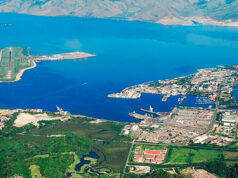Supreme Court lifts TRO vs MMDA’s no-contact apprehension policy

THE Supreme Court (SC) on Tuesday partially lifted the temporary restraining order (TRO) issued against the implementation of the No-Contact Apprehension Program (NCAP) of local government units and the Metro Manila Development Authority (MMDA).
This was confirmed by SC spokesperson Camille Sue Mae L. Ting in a press briefing on the same day. She added the ruling is effective immediately.
She clarified that the TRO lifting only covers the MMDA resolution, after the agency filed a motion for reconsideration through the Office of the Solicitor General.
“The TRO the court issued on Aug. 30, 2022, covered the MMDA resolution and the city ordinances,” she said. “So, the TRO [now] is only lifted with respect to the MMDA but still remains with respect to the LGU (local government unit) ordinances.”
This will cover major thoroughfares, such as C5 and the Epifanio de los Santos Avenue (EDSA), Buendia, Roxas Boulevard, Marcos Highway, and Katipunan, Commonwealth Avenue, Quezon Avenue, and West Avenue in Quezon City, among others.
In a May 8 motion, Solicitor General Menardo I. Guevarra said as of end-April 2025, data showed that around 833,097 traffic violations were recorded by MMDA’s CCTV cameras since the issuance of the TRO in 2022.
In March of this year alone, more than 12,000 violations were documented, higher than the 9,500 monthly average prior to the policy’s suspension.
“The MMDA cannot reasonably apprehend all these flagrant violations due to its limited personnel available for deployment to guarantee compliance with traffic regulations,” the motion read in part.
Mr. Guevarra also raised it is “critical” that the MMDA is granted full authority to implement the NCAP, in anticipation of a surge in traffic as the EDSA rehabilitation begins.
“Given the sheer volume of vehicles and the complexity of Metro Manila’s road network, the limited deployment of MMDA traffic enforcers and deputized local officers is grossly inadequate to manage the anticipated surge in traffic,” the motion also read.
“Existing traffic management measures simply fall short of what the situation demands.”
In a statement on Tuesday, the MMDA welcomed the reinstatement of the NCAP ahead of the massive EDSA rehab which will begin on June 13.
“The reinstatement of NCAP is expected to strengthen the agency’s traffic management along EDSA and other major thoroughfares, utilizing closed-circuit television cameras, digital cameras, and other technology to capture videos and images of traffic violators, record traffic violations, and issue citations,” the MMDA said.
The high court has not yet uploaded a full copy of the ruling.
It issued the TRO on Aug. 30, 2022, following several petitions that challenged the constitutionality of the program.
Among the petitioners were transport groups such as Sa Pagbabago ng Industriya ng Transportasyon Inc. (KAPIT), Pangkalahatang Sangguniang Manila and Suburbs Drivers Association Nationwide (Pasang-Masda), Alliance of Transport Operators and Drivers Association of the Philippines (ALTODAP), Alliance of Concerned Transport Organizations (ACTO), and lawyer Juman B. Paa.
The NCAP is a traffic enforcement scheme implemented by various LGUs and the MMDA to monitor and penalize traffic violations without the need for physical apprehension by traffic enforcers.
Under the NCAP, traffic violations are detected using surveillance cameras and other digital monitoring systems strategically installed in key areas. Once a violation is recorded, a notice is sent to the registered vehicle owner, who is then required to settle the corresponding fines.
The program aims to promote discipline among motorists, reduce traffic congestion, minimize opportunities for corruption, and ensure the safety of both drivers and traffic personnel by eliminating face-to-face encounters. — Chloe Mari A. Hufana



